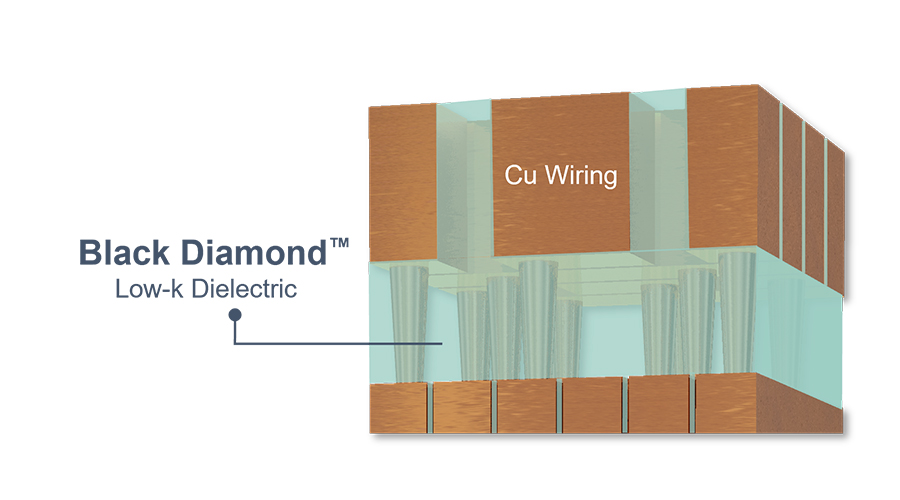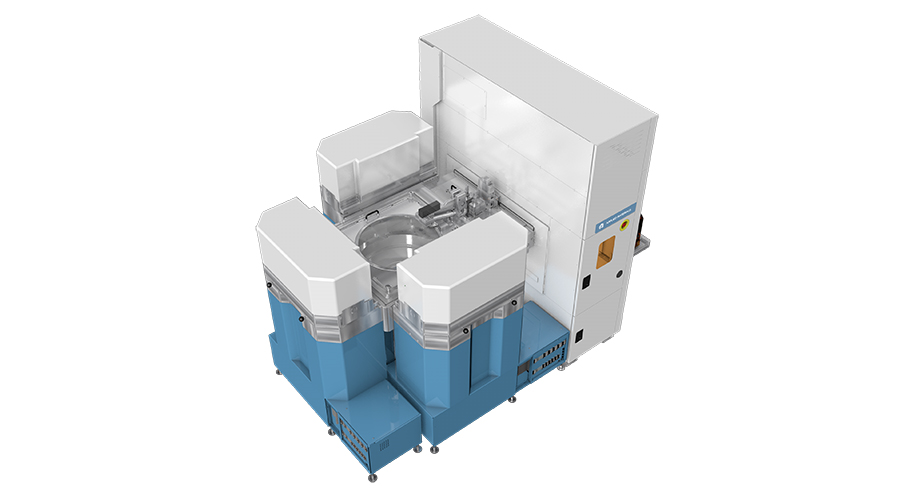Products & Technologies
Back to Menu
Products & Technologies
Services
Resources
Producer Black Diamond PECVD
Low-k dielectrics are key to reducing resistive-capacitive (RC) delay, lowering power consumption, and providing structural integrity in interconnects. Typically, a low dielectric constant—or “k value”—is used to increase signal speeds and lower power consumption at the expense of lower mechanical strength.
Applied Materials’ enhanced Producer™ Black Diamond™ technology reduces the minimum k-value to enable scaling at 2nm and below, while offering increased mechanical strength needed to support 3D logic and memory stacking. This new dense low-k dielectric film can be tuned to a wide range of k values, allowing it to be used on any metal layer. Leading logic and memory chipmakers continue to adopt Black Diamond films for high volume production at the most advanced nodes.
Previous Generations of Low-k Films
Black Diamond II is the only nano-porous low-k dielectric in production (k = ~2.55). Creating a nano-porous low-k film is a two-step process that starts with deposition of an organosilicate glass “backbone” and a thermally labile organic phase. An ultraviolet (UV) cure then removes the labile phase, inducing porosity and strengthening the remaining silicon-oxide matrix to form the final nano-porous film.
Black Diamond I is an industry leader and low-k dielectric benchmark with k = ~3.0, a dense low-k film specifically designed for lower metal levels.
UV Curing System
The Black Diamond family is co-optimized to work with the Applied Producer Apollo™ UV curing system. The Apollo system employs a high-intensity UV source to stabilize and densify the Black Diamond film, optimizing mechanical and optical properties. The Apollo UV curing system is the industry benchmark for low-k curing, providing the fastest curing times and highest yield in the market. All Black Diamond films are also co-optimized with Applied Materials’ CMP and metal deposition processes.



- 1 / 3
- 2 / 3
- 3 / 3
